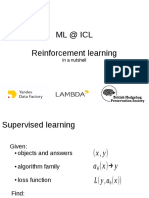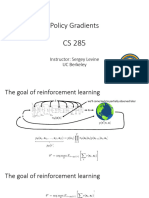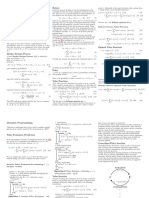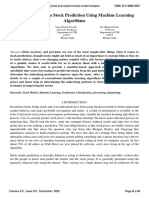0% found this document useful (0 votes)
30 views57 pages5 - Policy Gradient Methods
Uploaded by
rashedulhasan.seuCopyright
© © All Rights Reserved
We take content rights seriously. If you suspect this is your content, claim it here.
Available Formats
Download as PDF, TXT or read online on Scribd
0% found this document useful (0 votes)
30 views57 pages5 - Policy Gradient Methods
Uploaded by
rashedulhasan.seuCopyright
© © All Rights Reserved
We take content rights seriously. If you suspect this is your content, claim it here.
Available Formats
Download as PDF, TXT or read online on Scribd
/ 57




















































































